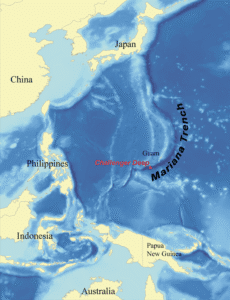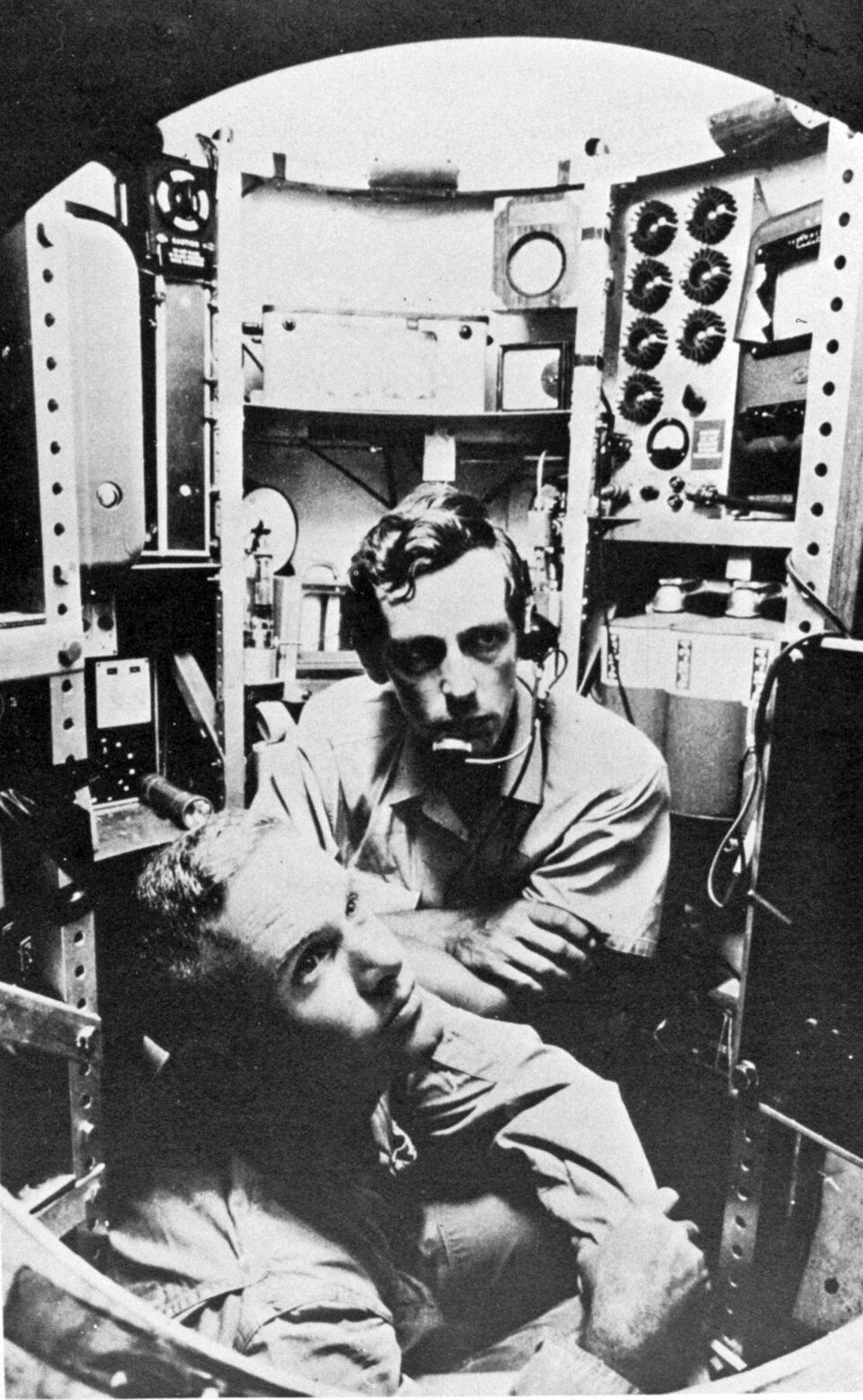We humans have already reached the Moon and are now dreaming of Mars. But friends, did you know that the greatest mystery still lies right here on Earth? Beneath the oceans, there is a place darker and more dangerous than space itself – the Mariana Trench.
Its deepest point, called the Challenger Deep, is nearly 11,000 meters below the ocean surface. To put that in perspective, if you placed Mount Everest inside the trench, it would still be underwater! Reaching this depth is not just a challenge, it’s a life-threatening adventure.
The First Ocean Don: Don Walsh & Jacques Piccard (1960)
In 1960, two fearless men – Don Walsh, a U.S. Navy Lieutenant, and Jacques Piccard, a Swiss explorer – did the impossible. Using a submarine named Trieste, they descended to a depth of 10,916 meters in the Mariana Trench.
At that time, people laughed and said, “This is impossible!” But they proved that with courage, even the deepest darkness can be conquered.

Courtesy: U.S. Navy / NOAA (Public Domain)
James Cameron: From Movies to the Ocean’s Abyss (2012)
We all know James Cameron as the director of Titanic and Avatar. But in 2012, he shocked the world by diving solo into the Challenger Deep in his custom-built submersible Deepsea Challenger.
He reached 10,908 meters, capturing HD footage of lifeforms never seen before. For the first time, people realized that a Hollywood director could also be a true hero of the deep ocean.

Titanic आणि Avatar बनवणारा दिग्दर्शक James Cameron ने एकट्याने 10,908 मीटर खोलवर जाऊन सगळ्यांना थक्क केलं.हॉलिवूडचा हिरो की खरा समुद्राचा हिरो? ठरवणं अवघड!
Victor Vescovo (2019) – Limiting Factor
In 2019, American explorer Victor Vescovo went even deeper, breaking all previous records. He piloted his submersible DSV Limiting Factor down to 10,928 meters, making it the deepest dive in human history.
His journey revealed strange creatures, plastic waste at the ocean’s bottom, and a message that even the world’s deepest point is not safe from human activity.

India’s Entry: The Samudrayaan Mission 🚀🌊
India is preparing to write its own chapter in deep-sea exploration. The National Institute of Ocean Technology (NIOT) is working on the Samudrayaan Mission, which aims to send humans 6,000 meters deep into the Indian Ocean using a submersible named MATSYA 6000.
Planned for the late 2020s, this mission will study marine biodiversity, mineral resources, and climate change. Imagine the headlines when an Indian explorer becomes the next Ocean Don!
External Reference: NIOT India – Samudrayaan Mission
🔗 Internal Link Suggest for more about Ocean exploration mystery check our New Updates category on yours suggestions we post more details summary
Quick Comparison of Major Dives
| Explorer | Year | Depth (meters) | Vehicle | Country |
|---|---|---|---|---|
| Don Walsh & Piccard | 1960 | 10,916 | Trieste Submarine | USA/Swiss |
| James Cameron | 2012 | 10,908 | Deepsea Challenger | Canada/USA |
| Victor Vescovo | 2019 | 10,928 | DSV Limiting Factor | USA |
Why the Deep Ocean Still Matters
Even today, more than 80% of the ocean floor remains unexplored. Scientists believe it holds secrets to new medicines, rare minerals, and unknown life forms. Exploring it is as important as space missions – and perhaps even more challenging.
FAQs (People Also Ask)
Q1. Where is the world’s deepest ocean point?
👉 In the Mariana Trench, Pacific Ocean, at a point called Challenger Deep.
Q2. How deep is the Mariana Trench?
👉 Nearly 11 kilometers (36,000 feet).
Q3. Did James Cameron really dive there?
👉 Yes, in 2012, James Cameron reached 10,908 meters in his submersible Deepsea Challenger.
Q4. What is India’s Samudrayaan Project?
👉 India’s plan to send humans 6 km underwater in the Indian Ocean with the MATSYA 6000 submersible.
Conclusion
From Don Walsh and Jacques Piccard in 1960, to James Cameron in 2012, to Victor Vescovo’s record dive in 2019 – the story of the Ocean Dons proves that human courage has no limits.
The ocean’s deepest secrets are still waiting. Who knows? Tomorrow’s headline might read:
“An Indian Explorer Conquers the Challenger Deep!” 🌊🇮🇳












